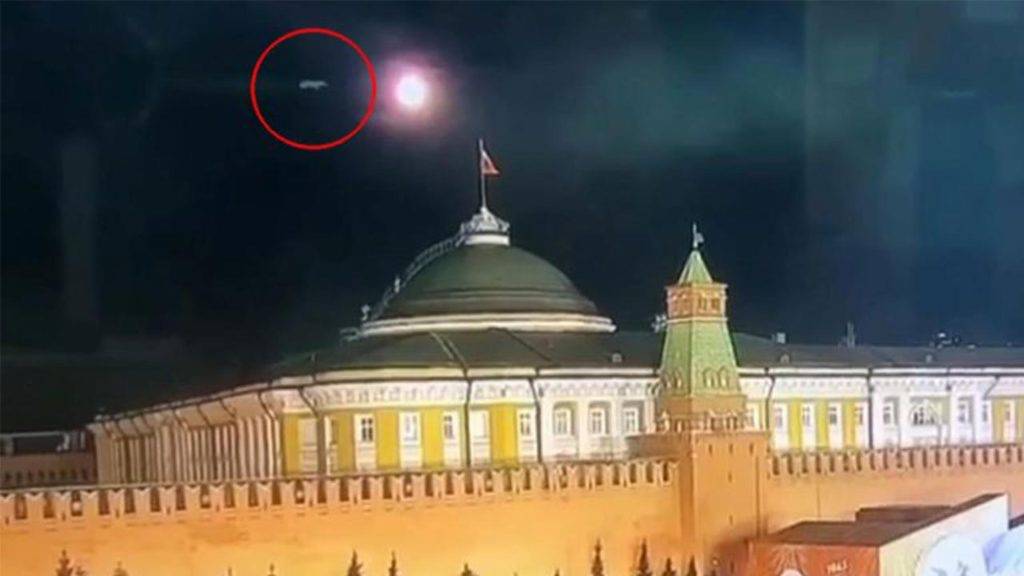Attack on Kremlin Palace : The alleged drone attack on the Kremlin Palace in Moscow, Russia, on May 3, 2023, has sparked international attention and raised concerns about the escalating tensions between Russia and Ukraine. In this article, we will explore the details of the attack and the questions that have been raised about its veracity.

Table :
| Name | Kremlin Palace |
|---|---|
| Date | May 3, 2023 |
| Location | Moscow, Russia |
Attack on Kremlin Palace:
On May 3, 2023, the world was stunned by news of an alleged drone attack on the Kremlin Palace in Moscow, Russia. Russian officials claimed that Ukraine was responsible for the attack, which they said was an attempt to assassinate President Vladimir Putin. However, as more information emerged, experts began to question whether the attack was staged by Russia as a pretext for further aggression against Ukraine.
According to reports, the attack involved several small drones armed with explosives. The drones allegedly penetrated Russian airspace undetected and targeted the Kremlin Palace, one of the most heavily guarded buildings in Russia. Russian officials claimed that the drones were shot down before they could reach their target, and that no one was injured in the attack. However, many experts have pointed out that the details of the attack don’t add up.
For one thing, the drones used in the attack were reportedly of a type that is not known to be in Ukraine’s arsenal. Additionally, the drones allegedly flew over 1,000 kilometers from Ukraine to Moscow, which is beyond their estimated range. Furthermore, the Russian military’s response to the attack was unusually muted, with no visible signs of damage or casualties. These discrepancies have led many experts to question whether the attack was staged by Russia as a pretext for further aggression against Ukraine.
What Happened At Kremlin Palace?
In response to the alleged attack, Russia has taken a number of aggressive steps against Ukraine. Russian officials have accused Ukraine of being behind the attack and have called for a military response. They have also imposed new sanctions on Ukraine and expelled Ukrainian diplomats from Russia. The United States and other Western countries have expressed concern about the escalating tensions between Russia and Ukraine and have called for a diplomatic solution to the crisis.
As the investigation into the attack continues, it remains unclear who was responsible and what the motives behind the attack were. Some experts have suggested that the attack may have been carried out by a third party, such as a terrorist group or a rogue state actor, rather than by Ukraine or Russia. Whatever the case may be, the attack on the Kremlin Palace is a stark reminder of the fragility of international relations and the dangers of escalating conflicts.
Frequently Asked Questions (FAQ’s) :
Q1. Who was responsible for the attack on the Kremlin Palace?
At present, it remains unclear who was responsible for the attack. Russian officials have blamed Ukraine, while experts have raised doubts about the official narrative and suggested that the attack may have been staged by Russia.
Q2. What was the motive behind the attack?
The motives behind the attack remain unclear. Russian officials have claimed that it was an attempt to assassinate President Putin, while others have suggested that it may have been a pretext for further aggression against Ukraine.
Q3. How did the drones penetrate Russian airspace undetected?
The exact details of how the drones were able to penetrate Russian airspace undetected are not clear. However, experts have suggested that they may have been equipped with advanced stealth technology.
Q4. What has been the international response to the attack?
The United States and other Western countries have expressed concern about the escalating tensions between Russia and Ukraine and have called for a diplomatic solution to the crisis.
Q5. What are the long-term implications of the attack?
The attack on the Kremlin Palace has heightened tensions between Russia and Ukraine and has raised concerns about the stability of the region.






